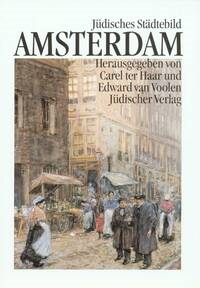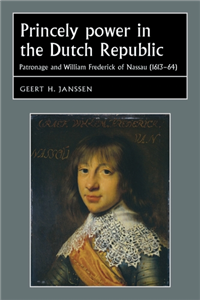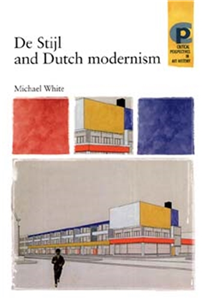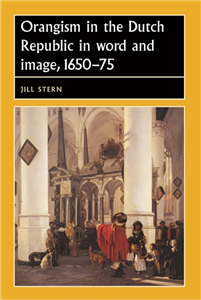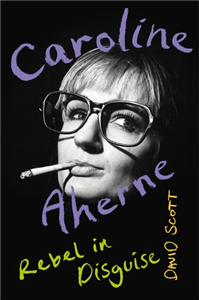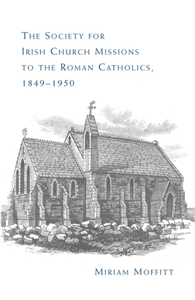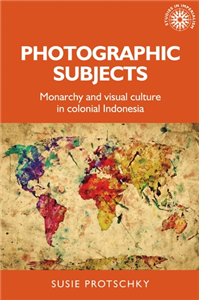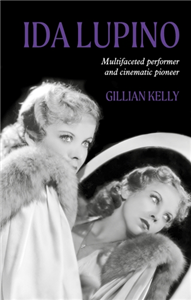Your Search Results
-
Promoted ContentLiterature & Literary StudiesMarch 2021
Thomas Heywood and the classical tradition
by Tania Demetriou, Janice Valls-Russell
-
Promoted ContentSeptember 2010
Amsterdam und zurück
Roman
by Marente Moor, Waltraud Hüsmert
Es ist ein ganzer Haufen Russen, den es zu Beginn der Neunziger in Amsterdam an Land gespült hat. Die Sowjetunion gibt es nicht mehr, die Grenzen sind durchlässiger geworden, aber Heimweh ist trotzdem ein Thema für diese Jungs, denen Puschkin-Büsten und Salzgurken inneren Halt geben, die ihre Tage auf dem pittoresken Rembrandtplein verbringen, wo sie Aquarelle an die Touristen verscherbeln, und ihre Nächte dem Studium des Wodkas widmen. Witali Kirillow ist einer von ihnen, der Mann mit den meergrünen Augen. Längst ist sein Visum abgelaufen, seit dem Tag, an dem er »illegal« wurde, fährt er vorsichtshalber in der Straßenbahn nicht mehr schwarz. Doch das ist nicht das einzige Delikt in Witalis Leben. Acht Jahre zuvor, als Offizier an der sowjetisch-finnischen Grenze, hinderte er einen Kameraden nicht daran, sich in den Westen abzusetzen. Von der Familie gutmütig als »das größte Loch im eisernen Vorhang« verspottet, wurde er von der Armee hart bestraft. Seitdem läßt der Gedanke an den Flüchtling Witali nicht mehr los. Und schließlich, unterstützt von der rasant-energischen Jessie, macht er sich auf, um herauszufinden, was aus ihm geworden ist. Nur zwei, drei Pinselstriche braucht Marente de Moor, um in ihrem Debütroman die unterschiedlichsten Viertel Amsterdams lebendig werden zu lassen und vor allem die russische Szene der Stadt zu porträtieren: lauter Charakterköpfe, die – hochsympathisch und besorgniserregend tiefgründig – ganz nebenbei verhandeln, was Grenze, was Identität, was Heimat bedeutet. »Ein mitreißendes Bild – manchmal herrlich komisch, manchmal voller Nostalgie – von einem ungebärdigen Pulk Russen, die wie Schiffbrüchige in Amsterdam gestrandet sind.« Haarlems Dagblad
-
 Trusted Partner
October 1993
Trusted Partner
October 1993Jüdisches Städtebild Amsterdam
by Edward Voolen, Carel Haar, Helga Beuningen
Dieser Band stellt das jüdische Amsterdam vor. In literarischen Texten, Bildern und Dokumenten wird die Blütezeit des 17. Jahrhunderts laut. Geschildert wird die Zeit der französischen Besatzung von 1795, die jüdische Lebenswelt des 19. Jahrhunderts, die Zeit der deutschen Besetzung der Niederlande 1940, die Deportation und Ermordung der meisten niederländischen Juden. Das gegenwärtige jüdische Leben kommt in literarischen Zeugnissen zu Wort. Die Anthologie literarischer Texte zeigt die deutschsprachige Literatur im holländischen Exil und gibt zugleich eine Übersicht der modernen niederländischen Literatur.
-
 Trusted Partner
Humanities & Social SciencesDecember 2008
Trusted Partner
Humanities & Social SciencesDecember 2008Princely power in the Dutch Republic
Patronage and William Frederick of Nassau (1613–64)
by Geert Janssen, Joseph Bergin, Penny Roberts, Bill Naphy
Based on one of the richest surviving diaries of the Dutch Golden Age, Princely Power in the Dutch Republic recaptures the social world of William Frederick of Nassau (1613-1664). As a Stadholder and relative of the Prince of Orange, William Frederick was among the key players in a fragmented republican state system. This study offers a vivid analysis of his political strategies and reveals how unwritten codes of patronage guided his daily contacts and shaped his mental world. As a patron at his court and as a client of the Prince of Orange, William Frederick developed distinctive patronage roles, appropriate to different social spheres. By assessing these different roles, Janssen provides a unique insight into the ways in which a seventeenth-century nobleman negotiated and articulated clientage, friendship and corruption in his life. This study offers an in-depth analysis of political practices in the Dutch Republic and reconsiders the way in which patronage shaped early modern politics, affected religious divisions and framed social identities. ;
-
 Trusted Partner
Humanities & Social SciencesJuly 2003
Trusted Partner
Humanities & Social SciencesJuly 2003De Stijl and Dutch modernism
by Michael White, Marsha Meskimmon, Shearer West, Tim Barringer
De Stijl was the title of a magazine founded in the Netherlands in 1917 and is now used to identify the abstract art and functional architecture of its major contributors: Mondrian, Van Doesburg, Van der Leck, Oud, Wils and Rietveld. This book is the first to emphasize the local context of De Stijl and explore its relationship to the distinctive character of Dutch modernism. Examines the connection between debates concerning abstraction in painting and spatiality in architecture and contemporary developments in the fields of urban planning, advertising, interior design and exhibition design. Describes the interaction between the world of mass culture and the fine arts. ;
-
 Trusted Partner
The ArtsDecember 2015
Trusted Partner
The ArtsDecember 2015Classical Hollywood cinema
Point of view and communication
by James Zborowski
This book offers a new approach to filmic point of view by combining close analyses informed by the tools of narratology and philosophy with concepts derived from communication studies. Each chapter stages a conversation between two masterpieces of classical Hollywood cinema and one critical concept that can enrich our understanding of them: Vertigo (Alfred Hitchcock, 1958) and Mr. Deeds Goes to Town (Frank Capra, 1936) are interpreted in relation to point of view; Anatomy of a Murder (Otto Preminger, 1959) and The Man Who Shot Liberty Valance (John Ford, 1962) are considered with reference to the concept of distance; and Letter from an Unknown Woman (Max Ophuls, 1948) and Only Angels Have Wings (Howard Hawks, 1939) are explored through the lens of communication. Each encounter reveals new, exciting and mutually illuminating ways of appreciating not only these case studies, but also the critical concepts at stake. ;
-
 Trusted Partner
Humanities & Social SciencesApril 2010
Trusted Partner
Humanities & Social SciencesApril 2010Orangism in the Dutch Republic in word and image, 1650–75
by Jill Stern, Joseph Bergin, Penny Roberts, Bill Naphy
This remarkable study represents a completely original presentation of the language and imagery used by the Orangists in the critical period in the mid-seventeenth century Netherlands as they sought the restoration of the stadholderate in the person of the young prince William III. Stern argues that the Orangists had no desire for the prince to become a monarch, rather that they viewed the stadholderate as an essential component of the Dutch constitution, the Union of Utrecht, and fulfilling a key role as defender of the rights and privileges of the citizenry against an overwheening urban oligarchy. Source material is drawn not only from books and political pamphlets but also from contemporary drama, poetry, portraits, prints, and medals. This enables the author to examine the imagery used by the supporters of the House of Orange, in particular the symbols of rebirth and regeneration which were deployed to propagate the restoration of the stadholderate in the person of William III. ;
-
 Trusted Partner
Humanities & Social SciencesMarch 2017
Trusted Partner
Humanities & Social SciencesMarch 2017Guardians of Empire
The Armed Forces of the Colonial Powers, C.1700-1964
by Andrew Thompson, John M. MacKenzie, David Killingray
For imperialists, the concept of guardian is specifically to the armed forces that kept watch on the frontiers and in the heartlands of imperial territories. Large parts of Asia and Africa, and the islands of the Pacific and the Caribbean were imperial possessions. This book discusses how military requirements and North Indian military culture, shaped the cantonments and considers the problems posed by venereal diseases and alcohol, and the sanitary strategies pursued to combat them. The trans-border Pathan tribes remained an insistent problem in Indian defence between 1849 and 1947. The book examines the process by which the Dutch elite recruited military allies, and the contribution of Indonesian soldiers to the actual fighting. The idea of naval guardianship as expressed in the campaign against the South Pacific labour trade is examined. The book reveals the extent of military influence of the Schutztruppen on the political developments in the German protectorates in German South-West Africa and German East Africa. The U.S. Army, charged with defending the Pacific possessions of the Philippines and Hawaii, encountered a predicament similar to that of the mythological Cerberus. The regimentation of military families linked access to women with reliable service, and enabled the King's African Rifles to inspire a high level of discipline in its African soldiers, askaris. The book explains the political and military pressures which drove successive French governments to widen the scope of French military operations in Algeria between 1954 and 1958. It also explores gender issues and African colonial armies.
-
 Trusted Partner
Humanities & Social SciencesMarch 2017
Trusted Partner
Humanities & Social SciencesMarch 2017British imperialism in Cyprus, 1878–1915
by Andrekos Varnava
-
 Trusted Partner
Humanities & Social SciencesMarch 2023
Trusted Partner
Humanities & Social SciencesMarch 2023Golden Mummies of Egypt
Interpreting identities from the Graeco-Roman period
by Campbell Price, Julia Thorne
Golden Mummies of Egypt presents new insights and a rich perspective on beliefs about the afterlife during an era when Egypt was part of the Greek and Roman worlds (c. 300 BCE-200 CE). This beautifully illustrated book, featuring photography by Julia Thorne, accompanies Manchester Museum's first-ever international touring exhibition. Golden Mummies of Egypt is a visually spectacular exhibition that offers visitors unparalleled access to the museum's outstanding collection of Egyptian and Sudanese objects - one of the largest in the UK.
-
PoetryJuly 1904
Paradise Lost
by John Milton
Paradise Lost is an epic poem in blank verse by the 17th-century English poet John Milton. The first version, published in 1667, consisted of ten books with over ten thousand lines of verse. A second edition followed in 1674, arranged into twelve books (in the manner of Virgil's Aeneid) with minor revisions throughout and a note on the versification. The poem concerns the biblical story of the Fall of Man: the temptation of Adam and Eve by the fallen angel Satan and their expulsion from the Garden of Eden. Milton's purpose, stated in Book I, is to "justify the ways of God to men".
-
 Trusted Partner
Humanities & Social SciencesJanuary 2013
Trusted Partner
Humanities & Social SciencesJanuary 2013Tyrants of Sicily by Hugo Falcandus
by Graham Loud, Thomas Wiedemann
This book is our principal source for the history of the Kingdom of Sicily in the troubled years between the death of its founder, King Roger, in February 1154 and the spring of 1169. It covers the reign of Roger's son, King William I, known to later centuries as 'the Bad', and the minority of the latter's son, William II 'the Good'. The book illustrates the revival of classical learning during the twelfth-century renaissance. It presents a vivid and compelling picture of royal tyranny, rebellion and factional dispute at court. Sicily had historically been ruled by tyrants, and that the rule of the new Norman kings could be seen, for a variety of reasons, as a revival of that classical tyranny. A more balanced view of Sicilian history of the period 1153-1169 has been provided as an appendix to the translation in the section of the contemporary world chronicle ascribed to Archbishop Romuald II of Salerno, who died in April 1181. In particular the chronicle of Romuald enables us to see how the papal schism of 1159 and the simultaneous dispute between the German Emperor Frederick Barbarossa and the north Italian cities affected the destiny of the kingdom of Sicily. In contrast to the shadowy figure of Hugo Falcandus, the putative author of the principal narrative of mid-twelfth-century Sicilian history, Romuald II, Archbishop of Salerno 1153-1181, is well-documented.
-
 Trusted Partner
Biography & True StoriesMay 2026
Trusted Partner
Biography & True StoriesMay 2026Caroline Aherne
Rebel in disguise
by David Scott
A thoughtful exploration of the work of this unique comedian and writer. Caroline Aherne was one of the most influential and beloved of British comedians. In this book David Scott explores Aherne's comedic artistry and creative legacy, focusing on her iconic characters and ground-breaking TV shows. Scott dives into Aherne's most beloved creations, from the sharp-tongued Mrs Merton to the quietly revolutionary The Royle Family. Drawing on the tales of collaborators and telling behind-the-scenes stories, he provides an intimate glimpse into the creative processes that brought these iconic works to life. At the same time, he examines the social and cultural influences that shaped Aherne's work, from the rich traditions of Northern working-class humour to the experiences of Irish migrants. Aherne's work is celebrated for its sharp wit, warmth and ability to find comedy in adversity. This book offers an exploration and celebration of one of comedy's most inventive minds, revealing how she reshaped the British comedy landscape.
-
 Trusted Partner
Humanities & Social SciencesAugust 2010
Trusted Partner
Humanities & Social SciencesAugust 2010The Society for Irish Church Missions to the Roman Catholics, 1849–1950
by Miriam Moffitt
This work details traces the origins, development and impact of the proselytizing organization, the Society for Irish Church Missions to the Roman Catholics, from its Protestant foundation during the famine of 1845-47 to the early decades of Irish Free State. It argues that the foundation of this ostensibly religious society was also underpinned by social, political, and economic factors and demonstrates that by the mid 1850s the mission operated on a very substantial scale. Moffitt examines the mission's role in the shifting political realities of the late nineteenth and early twentieth centuries. The impact of this inter-faith power struggle and its legacy to the present day are explored by examining contemporary sources, folklore evidence, and the depiction of proselytizing missions in both Catholic and Protestant denomination literature and fictional writings. ;
-
Family & home stories (Children's/YA)February 1905
Little Women
by Louise May Alcott
Little Women "has been read as a romance or as a quest, or both. It has been read as a family drama that validates virtue over wealth", but also "as a means of escaping that life by women who knew its gender constraints only too well".[6]:34 According to Sarah Elbert, Alcott created a new form of literature, one that took elements from Romantic children's fiction and combined it with others from sentimental novels, resulting in a totally new format. Elbert argued that within Little Women can be found the first vision of the "All-American girl" and that her multiple aspects are embodied in the differing March sisters.
-
 Trusted Partner
Humanities & Social SciencesJuly 2021
Trusted Partner
Humanities & Social SciencesJuly 2021Photographic subjects
Monarchy and visual culture in colonial Indonesia
by Susie Protschky
Winner of the ASAA mid-career book prize in Asian Studies 2020 and joint winner of the 2020 Royal Studies Journal Book Prize Photographic subjects examines photography at royal celebrations during the reign of Queens Wilhelmina (1898-1948) and Juliana (1948-80), a period spanning the zenith and fall of Dutch rule in Indonesia. It is the first monograph in English on the Dutch monarchy and the Netherlands' modern empire in the age of mass and amateur photography. Photographs forged imperial networks, negotiated relations of recognition and subjecthood between Indonesians and Dutch authorities, and informed cultural modes of citizenship at a time of accelerated colonial expansion and major social change in the East Indies/Indonesia. This book advances methods in the uses of photographs for social and cultural history and provides a new interpretation of Queens Wilhelmina and Juliana as imperial monarchs.
-
 Trusted Partner
May 2008
Trusted Partner
May 2008Die Romane
by Marguerite Duras, Ilma Rakusa
Die Suhrkamp-Quarto-Ausgabe versammelt sämtliche Romane von Marguerite Duras, von den Anfängen in den 50er Jahren mit Heiße Küste und Der Matrose von Gibraltar bis zu Der Liebhaber, ihrer Auseinandersetzung mit dem Trauma ihrer Kindheit, und Der Schmerz, dem Protokoll ihres Wartens auf ihren in Buchenwald internierten Mann. Dieser Band bietet im Vergleich zu den Einzelbänden eine Preisersparnis von 69%.
-
 Trusted Partner
March 2002
Trusted Partner
March 2002Die großen Romane
6 Bände in Kassette
by Martin Walser
Martin Walser wurde am 24. März 1927 in Wasserburg am Bodensee geboren. Nach seinem Arbeitsdienst erlebte er das Ende des Zweiten Weltkrieges von 1944 bis 1945 als Soldat der Wehrmacht. Nach Kriegsende machte er 1946 in Lindau am Bodensee-Gymnasium das Abitur und studierte an den Universitäten Regensburg und Tübingen Literaturwissenschaft, Geschichte und Philosophie. Mit einer Dissertation zu Franz Kafka wurde er 1951 in Tübingen promoviert. Von 1949 bis 57 arbeitete er beim Süddeutschen Rundfunk. In dieser Zeit unternahm er Reisen für Funk und Fernsehen nach Italien, Frankreich, England, CSSR und Polen und schrieb erste Hörspiele.1950 heiratete er Katharina Neuner-Jehle. Aus dieser Ehe gingen die Töchter Franziska, Alissa, Johanna und Theresia hervor. Seit 1953 wurde Walser regelmäßig zu den Tagungen der Gruppe 47 eingeladen, die ihn 1955 für die Erzählung Templones Ende auszeichnete. Sein erster Roman Ehen in Philippsburg erschien 1957 und wurde ein großer Erfolg. Walser lebte von da an mit seiner Familie als freier Schriftsteller erst in Friedrichshafen und dann in Nußdorf am Bodensee.
-
 Trusted Partner
The ArtsJuly 2025
Trusted Partner
The ArtsJuly 2025Ida Lupino
Multifaceted performer and cinematic pioneer
by Gillian Kelly
This book contributes to a welcome new wave focusing on the importance of female filmmakers, providing a reappraisal of Ida Lupino, a cinematic figure of significant importance. Given her ability to move between popular and independent cinemas and her status as both a Hollywood star and director/writer/producer of socially relevant films overlooked by the mainstream, Lupino is a particularly interesting case study. Employing a range of critical approaches, including feminist theory, auteur theory and critical theory, this book investigates key themes and motifs that developed across Lupino's unusual and unique career as one of the most significant female players in film history. Investigating her oeuvre as actress, director, writer and producer, it discusses Lupino as a complex and important filmmaker whose career, on both sides of the camera, requires substantially more critical attention than it has been awarded thus far.
-
 Trusted Partner
March 2023
Trusted Partner
March 2023Das Haus an der Herengracht
Roman | Eine junge Frau zwischen Liebe und Vernunft in Amsterdams Goldenem Zeitalter
by Jessie Burton
Amsterdam, 1705: Thea Brandt ist gerade achtzehn geworden und will endlich tun und lassen, was sie will. Sie liebt das Theater und nach den Vorstellungen besucht sie heimlich ihren Geliebten, Walter, den Kulissenmaler der Schouwburg. Doch als Tochter einer verarmten Kaufmannsfamilie, die nach und nach ihren Hausrat verkaufen muss, um sich über Wasser zu halten, wird von Thea erwartet, „eine gute Partie“ zu machen. Auf einem Ball stellt ihre Tante ihr Jacob van Loos vor, einen wohlhabenden Sohn aus gutem Hause. Eine Heirat mit ihm würde Thea nicht nur vor einem Leben in Armut bewahren, sondern ihr und ihrer Familie auch einen Platz in der feinen Gesellschaft sichern, der ihr bislang verwehrt war – Thea ist unehelich und hat auffallend dunkle Haut. Thea muss sich entscheiden: Rettet sie ihre Familie – oder folgt sie ihrem Herzen? In ihrem fulminanten neuen Roman führt Jessie Burton uns durchs Goldene Zeitalter Amsterdams und erzählt von einer leidenschaftlichen jungen Frau, die ihren Weg selbst bestimmen will.








